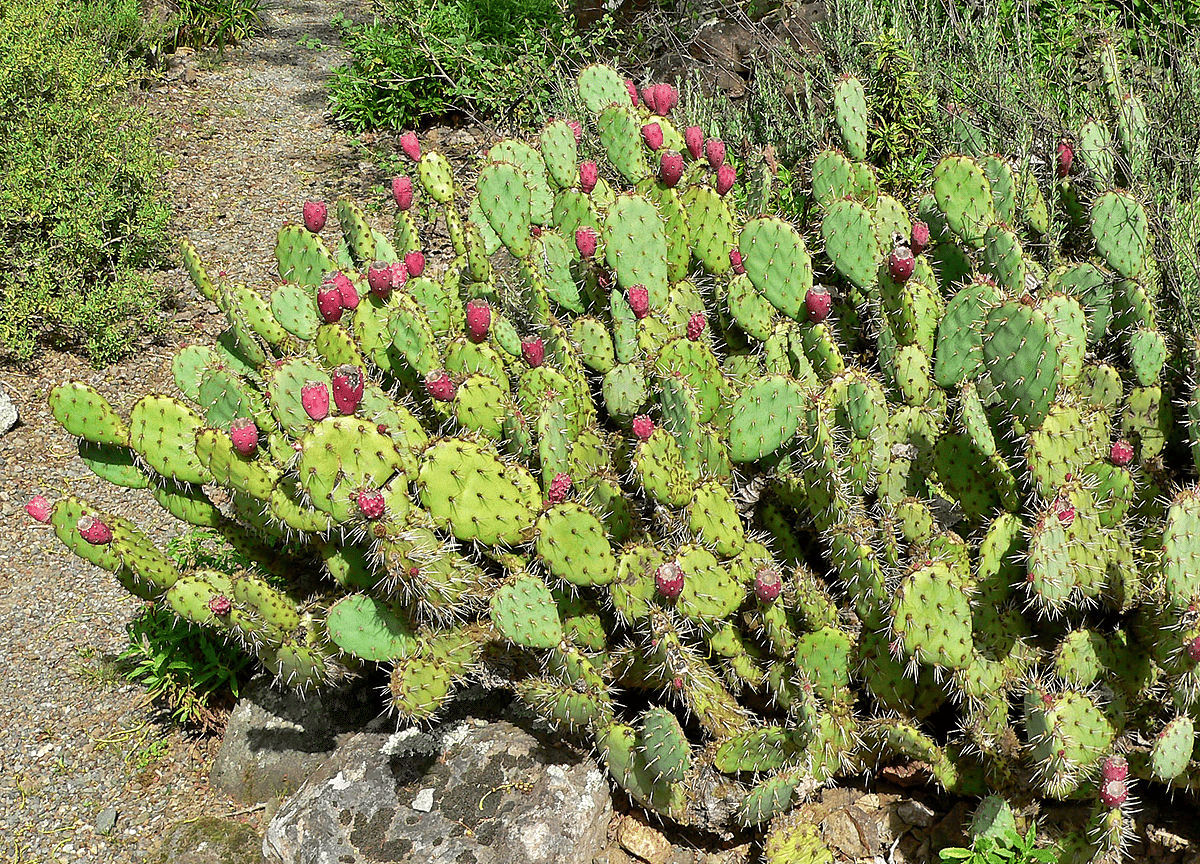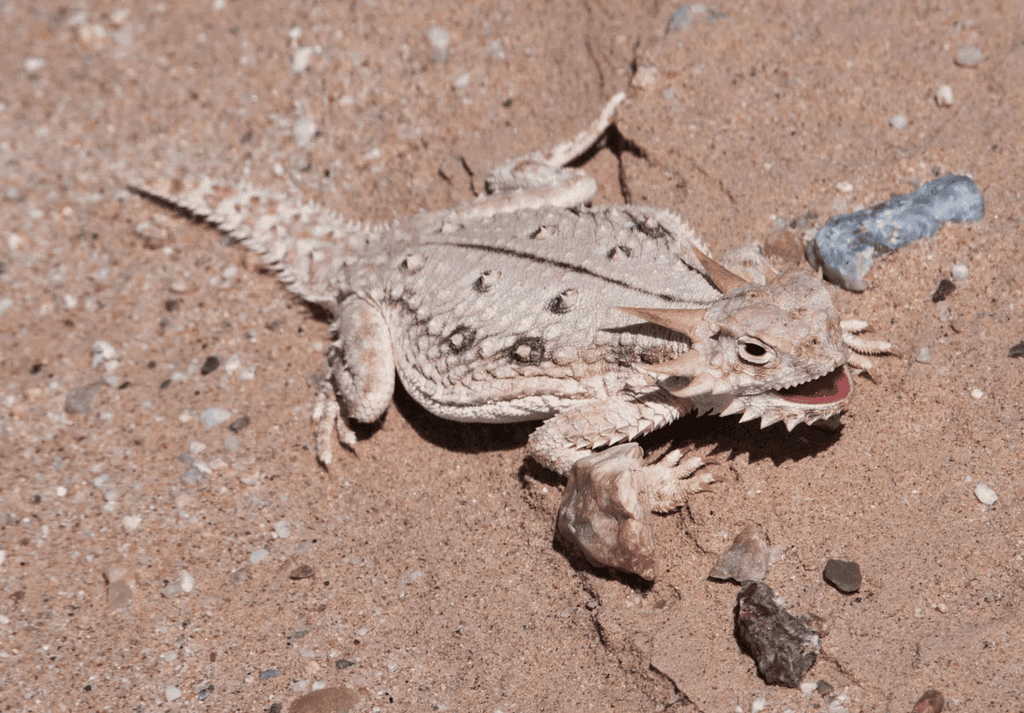Not in NCERT)"
| Table of contents |

|
| Introduction |

|
| Major Abiotic Factors |

|
| Response to Abiotic Factors |

|
| Adaptations |

|
Introduction
Ecology at the organismic level involves understanding how different organisms adapt to their environments in terms of survival and reproduction. This field, known as physiological ecology, explores the mechanisms that enable organisms to thrive in various conditions.
The rotation of the Earth around the Sun and the tilt of its axis lead to annual variations in temperature and precipitation, creating distinct seasons. These variations are crucial in forming major biomes such as deserts, rainforests, and tundras. Within each biome, regional and local differences give rise to various habitats.

Major biomes in India include deserts, rainforests, and tundras, each supporting unique ecosystems. Life on Earth is not limited to favourable habitats; organisms thrive in extreme environments like the scorching deserts of Rajasthan, the perpetually rain-soaked forests of Meghalaya, deep ocean trenches, torrential streams, permafrost polar regions, high mountain tops, boiling thermal springs, and even stinking compost pits. Even our intestines provide a unique habitat for hundreds of species of microbes.
 Major biomes of India : (a) Tropical rain forest; (b) Deciduous forest; (c) Desert; (d) Sea coast
Major biomes of India : (a) Tropical rain forest; (b) Deciduous forest; (c) Desert; (d) Sea coast
The key elements that contribute to the variation in physical and chemical conditions of different habitats are temperature, water, light, and soil. However, these abiotic components alone do not fully characterize a habitat. Biotic components, such as pathogens, parasites, predators, and competitors, also play a crucial role in shaping the habitat and the interactions organisms have within it.
Through natural selection, organisms have evolved adaptations that optimize their survival and reproduction in their specific habitats over time.
Major Abiotic Factors
(i)Temperature
- Temperature is a crucial environmental factor that influences the distribution and survival of organisms.
- The average temperature on land varies with season, and decreases from the equator to the poles, and from plains to mountain tops.
- Temperature ranges from subzero levels in polar regions and high altitudes to over 50°C in tropical deserts during summer.
- Unique habitats like thermal springs and deep-sea hydrothermal vents can have average temperatures exceeding 100°C.
Examples of temperature influence on organisms include: - Mango trees not growing in temperate countries like Canada and Germany.
- Snow leopards are not being found in Kerala forests.
- Tuna fish are rarely caught beyond tropical latitudes in the ocean.
- Temperature affects the kinetics of enzymes, which in turn impacts basal metabolism, activity, and other physiological functions of organisms.
- Some organisms are eurythermal, meaning they can tolerate a wide range of temperatures, while most are stenothermal, restricted to a narrow temperature range.
- Thermal tolerance levels of different species largely determine their geographical distribution.
- Concerns about increasing average global temperatures may affect the distributional range of some species in the future.
Examples of eurythermal and stenothermal animals and plants could include: - Eurythermal animals: Cod, Carp, and Tilapia.
- Stenothermal animals: Polar bear, and Walrus.
- Eurythermal plants: Cactus, and Pine.
- Stenothermal plants: Oak tree, and Maple tree.
(ii) Water
- Water is the second most crucial factor for the life of organisms after temperature. Life on Earth began in water and cannot survive without it. In deserts, water is so scarce that only specially adapted organisms can live there.
- The growth and spread of plants heavily rely on the availability of water.
- Although organisms in oceans, lakes, and rivers have plenty of water, they can still face problems related to water quality. Factors like the chemical composition and pH of water are vital for aquatic life.
- Salt concentration in water, known as salinity, varies between different bodies of water:
- Inland waters: less than 5 parts per thousand (ppt)
- Sea water: 30-35 ppt
- Hypersaline lagoons: over 100 ppt
- Some organisms can tolerate a wide range of salinities (euryhaline), while others can only survive within a narrow range (stenohaline).
- Many freshwater animals cannot survive in seawater for long due to osmotic issues, and vice versa.
(iii) Light
Light is crucial for living organisms, especially autotrophs like plants because they rely on photosynthesis to produce food.
Many small plants, such as herbs and shrubs, in forest environments have adapted to photosynthesize efficiently under low light conditions due to being overshadowed by taller trees.
Light is also important for some animals as they use changes in light intensity and duration (photoperiod) to time their foraging, reproduction, and migration activities.
On land, the availability of light is closely linked to temperature since both are provided by the sun.
In the deep ocean (below 500 meters), the environment is constantly dark, and its inhabitants do not rely on the sun for energy.
Marine organisms in deep waters depend on other sources of energy since they are not aware of the sun as a source of energy.
The spectral quality of solar radiation is also important for life. The UV component of the spectrum can be harmful to many organisms, and not all colours of the visible spectrum are available for marine plants at different ocean depths.
Among the various types of algae that inhabit the sea—such as red, green, and brown algae—certain types are better suited for survival in deeper waters due to their ability to utilize the available light.
(iv) Soil
- Soil properties vary based on: Climate, Weathering processes, Soil transport or sedimentation, Soil development processes
- Soil characteristics such as composition, grain size, and aggregation impact: Percolation, Water holding capacity
- Soil parameters like pH, mineral composition, and topography influence: Vegetation types, Animal populations
- In aquatic environments: Sediment characteristics determine the types of benthic animals that can thrive.
Response to Abiotic Factors
Organisms living in habitats with drastically varying abiotic conditions over time have developed various strategies to cope with these stressful conditions. While one might expect that many species would have evolved a relatively constant internal environment (homeostasis) to optimize biochemical reactions and physiological functions, the reality is that external environmental conditions can be highly variable.
Homeostasis refers to the ability of an organism to maintain a stable internal environment despite external fluctuations. For example, an organism might strive to keep its internal temperature and osmotic concentration of body fluids constant, even when the outside temperature or humidity changes dramatically.
To illustrate this concept, consider a person who performs best at a temperature of 25°C. This person might use air conditioning in the summer and heating in the winter to maintain a comfortable indoor temperature, ensuring optimal performance regardless of outside weather conditions. While humans achieve homeostasis through artificial means, other living organisms have evolved their own methods to cope with varying abiotic factors.
- Physiological Adaptations: Some organisms have physiological mechanisms that allow them to adjust their internal conditions. For instance, certain fish can regulate their body temperature and osmotic balance even when water temperatures fluctuate.
- Behavioral Adaptations: Many animals exhibit behavioral changes to cope with environmental stress. For example, reptiles may bask in the sun to raise their body temperature or seek shade to cool down.
- Morphological Adaptations: Some organisms have physical traits that help them withstand extreme conditions. Cacti, for example, have thick, waxy skin to reduce water loss in arid environments.
- Migration: Many species migrate to more favorable environments during extreme conditions. Birds, for example, often fly south for the winter to escape cold temperatures.
- Dormancy: Some organisms enter a state of dormancy during unfavorable conditions. Seeds may remain dormant until conditions are right for germination, while certain animals hibernate during winter.
- Reproductive Strategies: Some species have adapted their reproductive strategies to ensure survival in variable conditions. For example, some fish lay eggs that can withstand a range of temperatures and salinities.
- Community Interactions: Organisms may also rely on interactions with other species in their community to cope with environmental stress. For example, some plants rely on symbiotic relationships with fungi to help them absorb water and nutrients more efficiently.
 Diagrammatic representation of organismic response
Diagrammatic representation of organismic response
(i) Regulate
- Some organisms can maintain a stable internal environment, or homeostasis, through physiological and sometimes behavioral means. This includes keeping a constant body temperature and osmotic concentration.
- Most birds, mammals, and a few lower vertebrates and invertebrates are capable of thermoregulation and osmoregulation. Evolutionary biologists believe that mammals' success is largely due to their ability to maintain a constant body temperature, allowing them to thrive in diverse environments, from Antarctica to the Sahara Desert.
- Mammals, including humans, use similar mechanisms to regulate body temperature. For example,humans maintain a constant body temperature of 37°C:
- In summer, when the outside temperature exceeds 37°C, humans sweat profusely. The evaporative cooling process, akin to the operation of a desert cooler, helps lower body temperature.
- In winter, when the temperature drops below 37°C, humans start to shiver. This involuntary muscle activity generates heat, raising body temperature.
- Plants, however, lack these mechanisms for maintaining internal temperatures. They do not have the ability to regulate their body temperature like mammals do.
(ii) Conform
- Most animals (99%) and nearly all plants are conformers, meaning their internal environment changes with the external conditions.
- Osmotic concentration in aquatic animals adjusts with the surrounding water.
- Despite the benefits of a stable internal environment, not all organisms have evolved to be regulators because maintaining such stability is energetically costly.
- Small animals like shrews and hummingbirds struggle with thermoregulation due to their high surface area-to-volume ratio, leading to rapid heat loss in cold environments.
- Over time,evolution has balanced the costs and benefits of internal regulation, with some species capable of regulating within a limited range before conforming.
Why Conformers Don't Evolve into Regulators?
- Energetic Cost: Thermoregulation requires a lot of energy, especially for small animals.
- Surface Area and Heat Loss: Small animals, like shrews and hummingbirds, lose heat quickly because of their large surface area compared to their volume. In cold weather, they expend a lot of energy to generate body heat.
- Limited Evolutionary Range: Some species can regulate their internal environment, but only within a narrow range of conditions.
- Short-term Stress: If external conditions are only temporarily stressful, organisms have alternative strategies to cope.
(iii) Migrate
The organism can move away temporarily from the stressful habitat to a more hospitable area and return when the stressful period is over. In human analogy, this strategy is like a person moving from Delhi to Shimla for the duration of summer. Many animals, particularly birds, undertake long-distance migrations during winter to find more hospitable areas.
For example, every winter, the famous Keoladeo National Park (Bharatpur) in Rajasthan hosts thousands of migratory birds coming from Siberia and other extremely cold northern regions.
(iv) Suspend
- Bacteria, fungi, and lower plants: These organisms produce thick-walled spores to endure harsh conditions. When the environment becomes suitable again, these spores germinate and grow into new organisms.
- Higher plants: Seeds and certain vegetative structures help plants survive stressful periods and assist in dispersal. Under favorable conditions of moisture and temperature, these seeds and structures germinate to produce new plants. They achieve this by reducing their metabolic activity and entering a state of dormancy.
- Animals: If animals cannot migrate to escape stress, they may hibernate or aestivate. For instance, bears hibernate during winter to avoid cold temperatures, while some snails and fish aestivate to escape summer heat and dryness. Additionally, many zooplankton species in lakes and ponds enter a state called diapause, which is a period of suspended development, to survive unfavorable conditions.
Adaptations
- Organisms can cope with extreme environmental conditions through various adaptations, which can be physiological or behavioural.
- Physiological adaptations involve internal adjustments, such as the kangaroo rat in North American deserts. It meets its water needs through internal fat oxidation, where water is a byproduct. Additionally, it concentrates its urine to minimize water loss.
- Behavioural adaptations include actions like temporary migration to less stressful habitats.
- Some adaptations, like those seen in desert plants, have evolved over long periods and are genetically fixed. For example, many desert plants have a thick cuticle on their leaves and deep pits for stomata to reduce water loss through transpiration.
- Desert plants also utilize a special photosynthetic pathway called Crassulacean Acid Metabolism (CAM), allowing their stomata to remain closed during the day, further conserving water.
- Certain desert plants, such as Opuntia, have no leaves; instead, their leaves are reduced to spines, and the flattened stems perform photosynthesis.
 Opuntia
Opuntia
Adaptations in Mammals and Animals to Extreme Environments
- Mammals from colder climates have shorter ears and limbs to minimize heat loss, a phenomenon known as Allen’s Rule. In polar seas, aquatic mammals like seals have a thick layer of fat (blubber) under their skin, which acts as an insulator to reduce body heat loss.
- Some organisms have physiological adaptations that enable them to respond rapidly to stressful situations. For instance, at high altitudes (above 3,500 meters) like Rohtang Pass near Manali or Mansarovar in Tibet, people often experience altitude sickness, characterized by symptoms such as nausea, fatigue, and heart palpitations. This occurs due to low atmospheric pressure at high altitudes, leading to insufficient oxygen. Over time, individuals acclimatize and the symptoms subside. The body compensates for low oxygen availability by increasing red blood cell production, decreasing haemoglobin's binding affinity, and increasing the breathing rate.
- Many tribes living in the high altitudes of the Himalayas may have a higher red blood cell count or total haemoglobin compared to people living in the plains.
- Most animals have metabolic reactions and physiological functions that operate optimally within a narrow temperature range (e.g., 37°C in humans). However, some microbes, such as archaebacteria, thrive in extreme environments like hot springs and deep-sea hydrothermal vents where temperatures exceed 100°C. Similarly, many fish survive in Antarctic waters where temperatures are consistently below freezing. They prevent their body fluids from freezing through various adaptations.
- Marine invertebrates and fish living at great ocean depths, where pressure exceeds 100 times normal atmospheric pressure, have unique adaptations that allow them to survive under such extreme conditions. These organisms may possess specialized enzymes that function under high pressure.
- Some organisms also exhibit behavioural responses to cope with environmental variations. For example, desert lizards lack the physiological mechanisms that mammals use to regulate body temperature in high heat. Instead, they use behavioural strategies to maintain a relatively constant body temperature. They bask in the sun to absorb heat when their body temperature drops below the comfort zone and seek shade when the ambient temperature rises. Some lizard species can also burrow into the soil to escape the intense heat above ground.
 Desert Lizard
Desert Lizard
|
59 videos|290 docs|168 tests
|
FAQs on Not in NCERT)"
| 1. What are the major abiotic factors that influence ecosystems? |  |
| 2. How do organisms respond to changes in abiotic factors? |  |
| 3. What are some common adaptations organisms have developed to cope with abiotic factors? |  |
| 4. How do abiotic factors interact with biotic factors in an ecosystem? |  |
| 5. Why is understanding abiotic factors important for conservation efforts? |  |





















